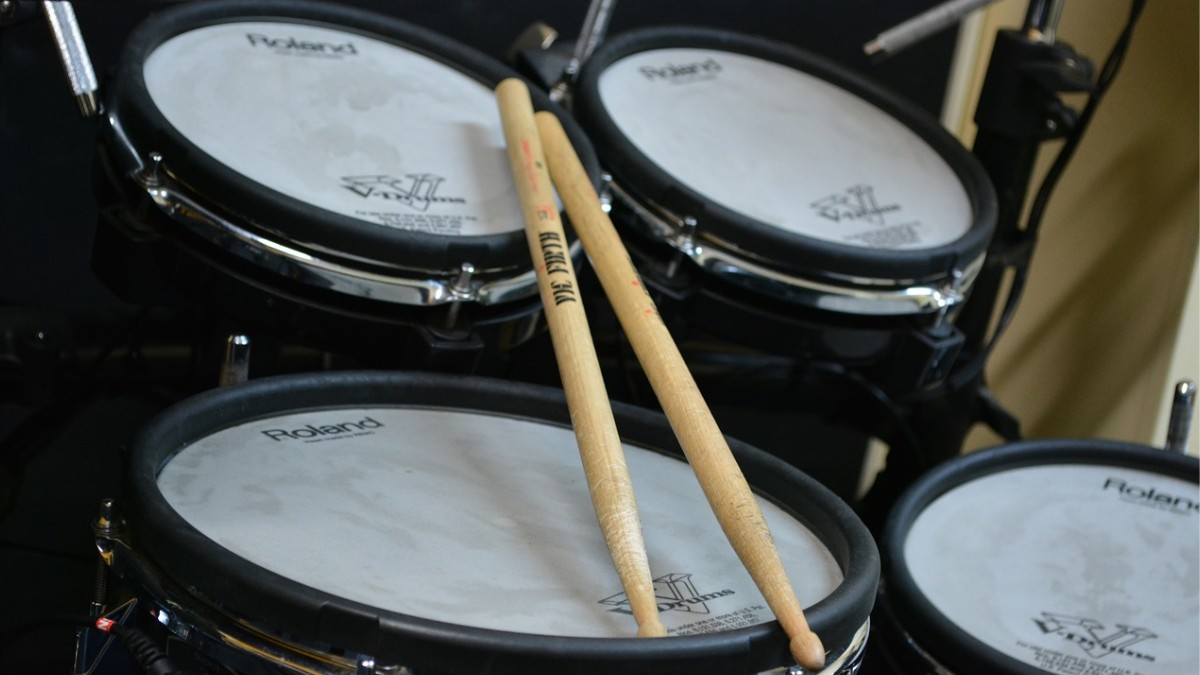A Brief History of the Bass Drum
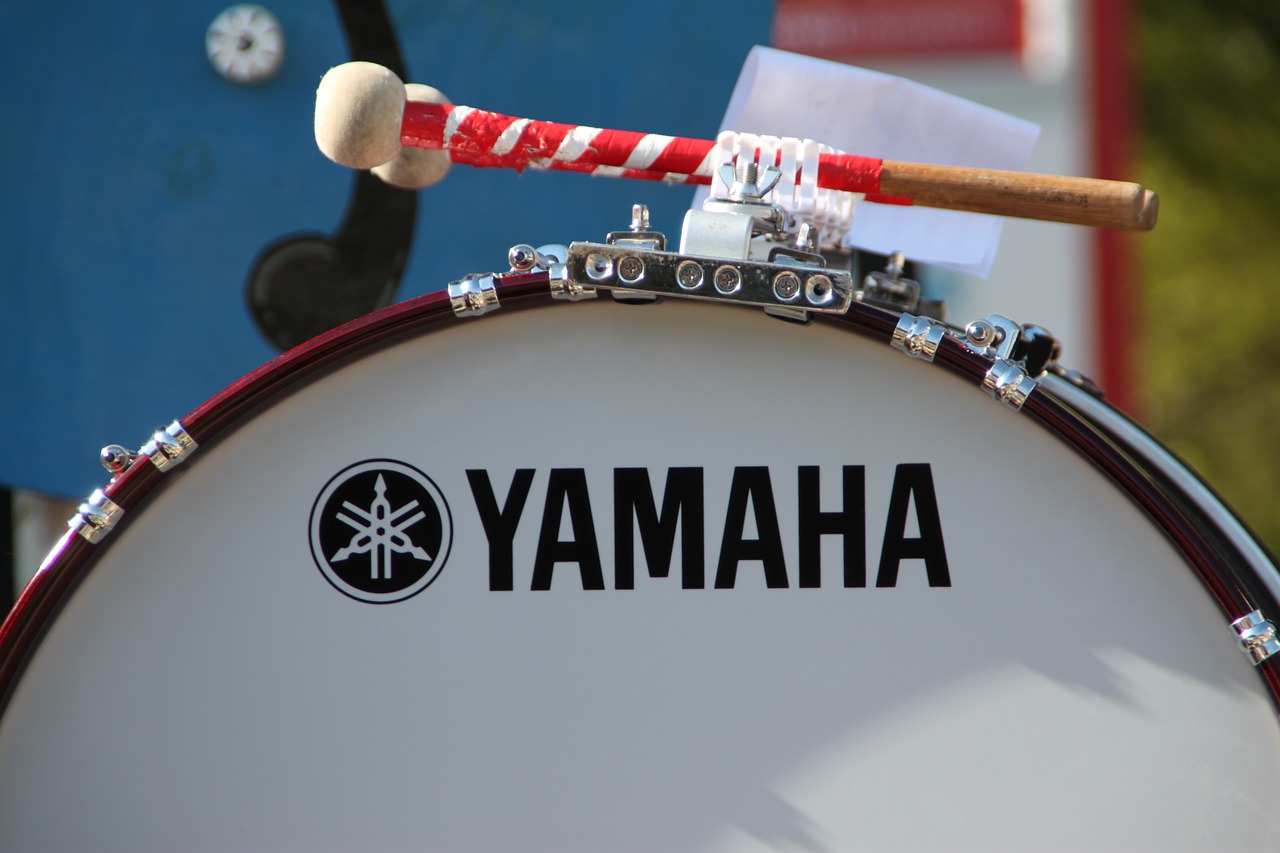
Bass drums, also known as kick drums, could be considered the very soul of a drum kit. They produce a low-pitched sound, usually employed to highlight the strong beats in a measure. In other words, they are necessary to keep the tempo.
The bass drum has grown so associated with drumming that it’s easy to take it for granted. However, they have a long and illustrious history. From its invention to where it is now, they’ve seen a lot.
You can find bass drums in any setting: from classical music to rock drum kits, from jazz orchestras to marching bands.
What are the main characteristics of this pivotal percussion instrument? How and when did it originate? Let’s find out!
Contents
Size, structure, and material
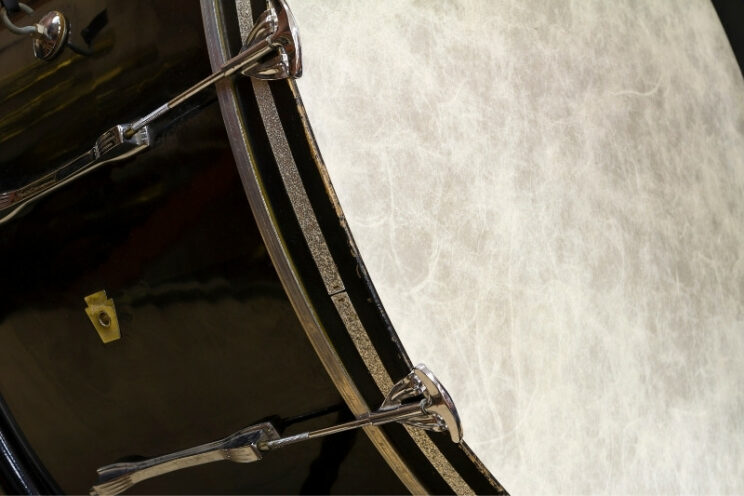
Bass drums are usually large and cylindrical, with a diameter way bigger than their depth.
They come in various sizes, although this characteristic doesn’t affect the amplitude of the sound they emit. They present two heads, either in calfskin or plastic, whose tension can be adjusted to tune the instrument.
Their frequency depends on their diameter (the wider the drum, the lower the pitch), but it is also affected by material, frame thickness, and direction of wood grans.
Predecessors and origins
The most known predecessor of a bass drum, as we know it, is probably the Turkish davul, traditionally employed in battles because of its deep, profound sound. Davuls, just like our bass drums, presented two heads that would emit a low-pitched sound if struck.
To play the davul, Turkish soldiers would attach it to their chest employing strong straps, almost exactly as bass drummers do today in marching bands.
With the extension of the Ottoman Empire to different areas of Northern Africa, the concept of davul spread and evolved into different characteristics. For instance, African local populations invented long drums, and extended percussive instruments made out of trees that presented two different heads made of cowskin.
Long drums evolved as they spread across Europe, where, in 19th century Britain, gong drums emerged. These were very large single-headed drums and emitted a definite pitch, with much resonance. These characteristics made gong drums unemployable in classical orchestras.
That’s why specific orchestral bass drums made their appearance. With a smaller size (usually between 20 and 22 inches – 50 and 55 cm) and an indefinite low pitch, they are still used in classical music to stress certain beats or add color and depth to the composition.
Kick drums
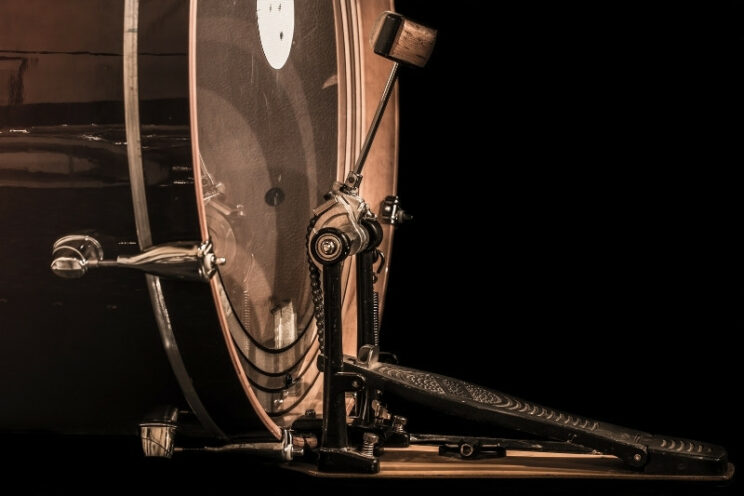
Bass drums are employed in modern drum kits, where they are usually known as kick drums. Kick drums are usually smaller in size than the orchestral bass drums and, since the Sixties, under the influence of legendary rock drummers such as Ginger Baker and Keith Moon, there can be even two of them in a single kit.
Kick drums usually range from 16 to 28 inches in diameter and 14 to 18 inches in depth.
In this context, the mallet used to strike one drum head of the drum is mounted on a pedal so that drummers can play the bass drum while hitting the other components of the kit (such as cymbals, high-hat, and so on).
There are three main pedal techniques to obtain three different kinds of sound.
The heel-down technique produces a soft tone and is perfect for quick syncopated rhythms. With this technique, the drummer plays keeping their heel down and moving the ankle.
For a stronger sound, drummers can employ the heel-up technique, in which the stroke originates from the hip.
For a strong sound but with more speed, drummers use the floating stroke technique. A sort of combination of the previous two, the floating stroke is operated by the ankle, but while keeping the heel up.
Drummers employ many other techniques to obtain different rhythms, feels, and nuances. They also use specific techniques to play a double set of kick drums, usually with a double kick pedal.
Modern bass drums (kick drums) have a porthole. This is useful to add muffling material to attenuate the sound of the drum, but also to place a microphone to effectively amplify the instrument in the studio or a live setting.
Marching bands
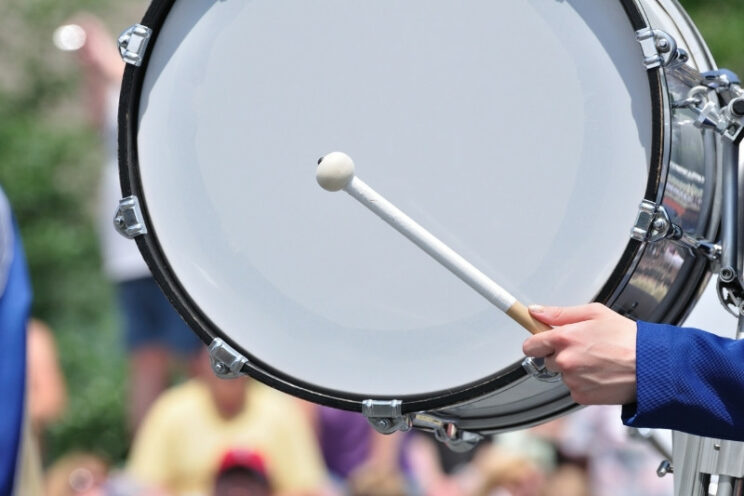
The bass drum is a must in marching bands. Due to its large nature, the bass drums are in charge of keeping the tempo of the composition and can range anywhere from 2 to 7 bass drums in a marching band line-up.
In this context, bass drums have specific pitches and usually come in ensembles of five players. They are essential to project and keep the tempo, but their pitched nature also adds another melodic layer to the whole band.
Drummers mount their instrument onto their chest with the aid of stripes and strike both heads either with two mallets or a mallet and a rute.
Each drummer in the ensemble has a specific role, although sometimes bass drums are played in unison to offer a deeper foundation to the melody.
The bottom bass, the largest one, is usually described as the “heartbeat” of the ensemble, as it produces the lowest sound, meant to keep the pulse.
The fourth bass usually plays quicker notes than the bottom one. The middle bass adds another rhythmical layer, completed by the second and the top drums, the narrowest ones, that sometimes play in unison with the snare drums.
Bass drums have another important role in a marching band: giving direction. For example, one stroke orders the band to start marching and two strokes order the band to stop marching.
Bass drums are an essential instrument in many different genres and styles. Their origins are ancient and their use is versatile.
Choosing the right bass drum for your kit or purpose is essential to obtaining that deep, kicking sound you want.
Bass Drums Today
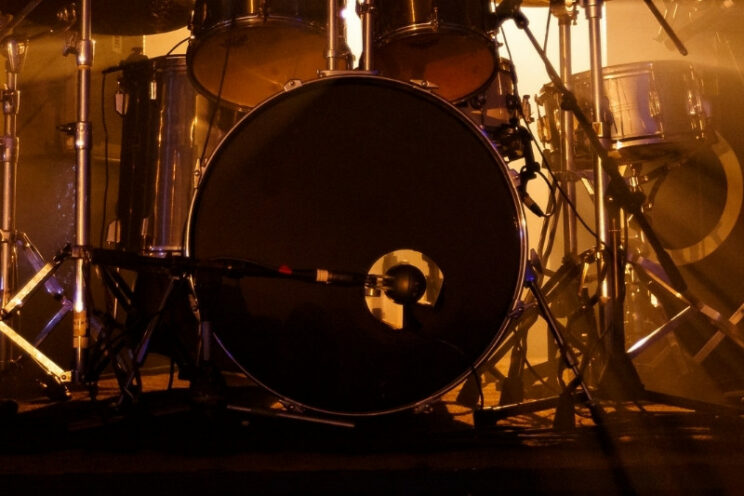
Deriving from its rich history to what the bass drum stands for today, the modern kick drum is deeply rooted in almost all musical genres. It has a place in every drum kit and style worldwide. The playing style has evolved as well, with double kick pedals, particular beaters, hoops, drum heads, etc.
The rise of popular music can also be accredited to the kick drum’s popularity and its significance. Respectable brands and manufacturers like Pearl, DW, Sonor, TAMA, Yamaha, and so on, all have shed light and given birth to modern drum sets we all hold dear.
To name a few, the Yamaha Stage Custom Birch, TAMA Imperialstar, Sonor AQ2, and many more. If you’re interested, you can check out full sets for adults right here.
Conclusion
Bass drums are an essential instrument in many different genres and styles. Their origins are ancient and their use is versatile.
They come in different shapes and sizes, with different mounting techniques and optional features. The choice of the right kind is essential for a great bass sound in every specific context.
Evolving from ancient times, the bass drum is an essential instrument in every rhythmical layer. It serves as a foundation to beat time and can range from melodic to deep tones.
In marching bands, bass drums have a specific role in directing and providing a steady pulse for other instruments to improvise around. The bass drum is also employed in many genres and musical styles, from jazz percussion to electronic music.
I hope this article sheds some light on the history of bass drums.



